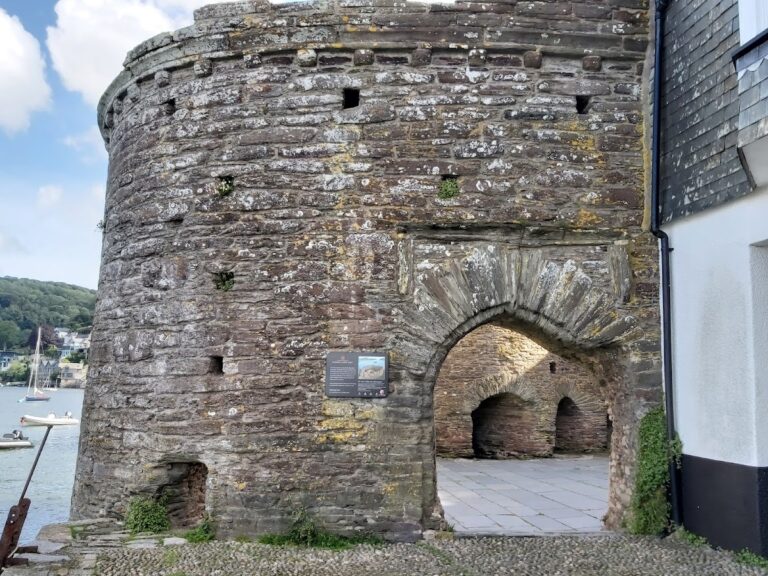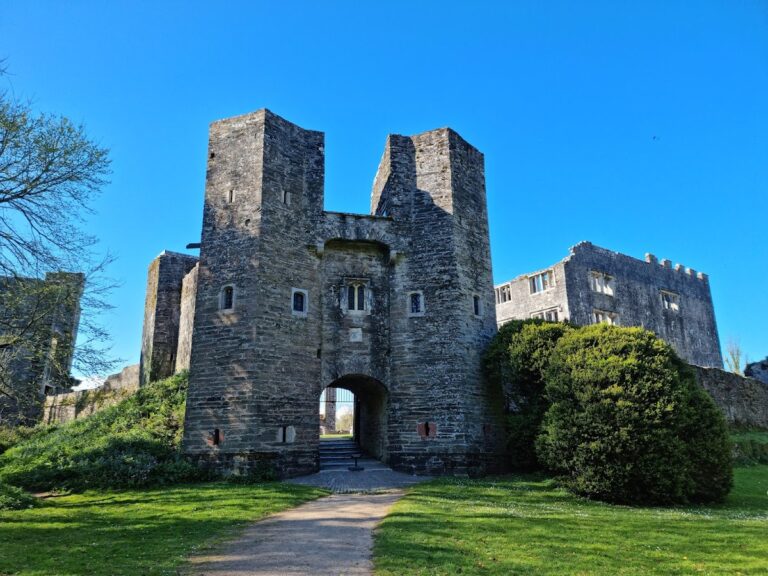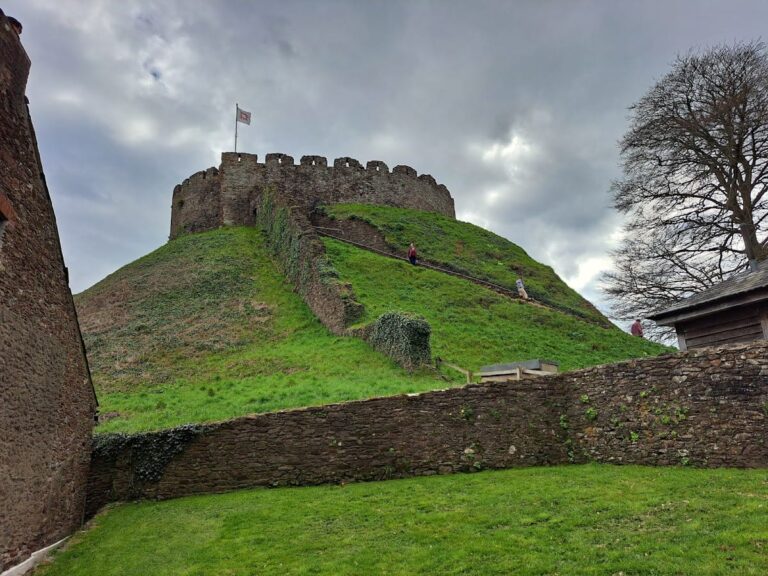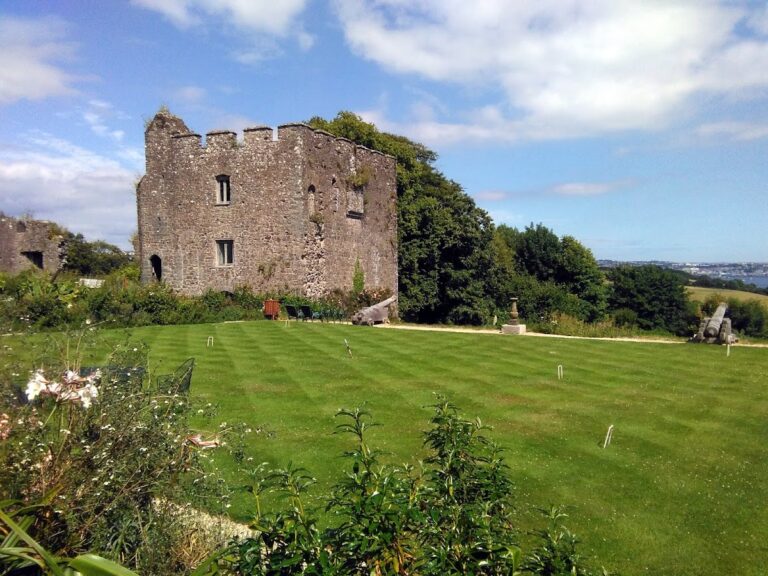Dartmouth Castle: A Historic Coastal Fortification in Devon, England
Visitor Information
Google Rating: 4.5
Popularity: Medium
Google Maps: View on Google Maps
Official Website: www.english-heritage.org.uk
Country: United Kingdom
Civilization: Medieval European
Remains: Military
History
Dartmouth Castle, located on a rocky outcrop overlooking the entrance to Dartmouth harbour in Devon, England, was first built in the 1380s. It was constructed by the English during the Hundred Years War to protect the harbour from French attacks. The original fort enclosed the local chapel of Saint Petroc and was armed with catapults and possibly some of the earliest cannon, marking it as a defensive site of strategic importance.
In the late 15th century, under King Henry VII, the castle underwent significant expansion. A new artillery tower was added, and an iron chain was stretched across the harbour to a tower at Godmerock. This chain was designed to block enemy ships and represents the earliest known purpose-built coastal artillery fortification in Britain. By 1495, the tower was completed and equipped with several types of guns, including “murderer” and “serpentine” artillery pieces.
During the 1540s, amid fears of a French invasion, the castle’s defenses were strengthened with additional gun batteries. One of these, known as Lamberd’s Bulwarke, later became the Grand Battery, which by 1748 housed twelve guns. The castle saw action during the English Civil War (1642–1646), when its vulnerability to attacks from the land was revealed. To address this, the nearby Gallants Bower earthwork was used to bolster its defenses.
The Carew family, who originally owned the land, maintained a residence within the castle until it was damaged during the mid-17th century conflicts and subsequently demolished. Although the castle remained in military use through the 17th and 18th centuries, it gradually fell into neglect by the early 1700s.
In the 19th century, Dartmouth Castle was modernized in 1859 as part of the Royal Commission on the Defence of the United Kingdom. Despite these upgrades, it was considered a low priority for military defense. The castle was rearmed during World War II and continued in military service until 1955, when it was finally retired.
Remains
Dartmouth Castle occupies a prominent position on a rocky promontory guarding the harbour entrance. Its layout includes a main gun tower on the north side facing the River Dart and the nearby Saint Petrox Church. On the south-east side lies the Old Battery, built on the site of earlier gun positions.
The original 14th-century fortification includes a corner tower, remnants of a moat, and curtain walls up to 7 feet 6 inches (2.29 meters) thick and 23 feet (7.0 meters) high. These walls form the core of the early defensive enclosure.
The main gun tower, constructed in the late 15th century, rises three storeys. It features a semi-circular limestone rubble section that housed the mechanism for the harbour chain, and a square section built from slate that contained artillery. Each floor has two main rooms, one circular and one rectangular, reflecting changes made during construction. The basement held artillery with simple gun-ports protected by wooden shutters. The ground floor contained offices, living quarters, and the chain room with a pulley and capstan system. The first floor served as accommodation and included an oven. Gunloops, or small openings for handguns, encircle the lower floors for close defense. The battlements were later raised to protect against musket fire from higher ground, and an 18-foot (5.5 meter) turret extends above the roof.
Flanking the tower are two gun platforms dating from the mid-16th century, which were modified in the 18th century to accommodate newer artillery.
Saint Petrox Church, a three-aisled building mainly dating from 1641 with restorations in 1833, stands just behind the gun tower, reflecting the site’s long-standing religious connection.
The Old Battery, built in 1861 on the site of the former Grand Battery and Lamberd’s Bulwarke, consists of three vaulted casemates designed for heavy guns that could be aimed across the sea. A smaller gun position covers the harbour entrance, and two heavy guns are mounted on the roof. The landward side is defended by a ditch, rifle loops, and murder-holes—openings through which defenders could attack enemies below. Above the magazines, a guard room is part of this complex. A white concrete building, originally disguised as a medieval turret, now serves as a ticket office.
Behind the Old Battery stands a 19th-century tower that operated as a lighthouse from 1856 until 1886, adding to the site’s maritime significance.










